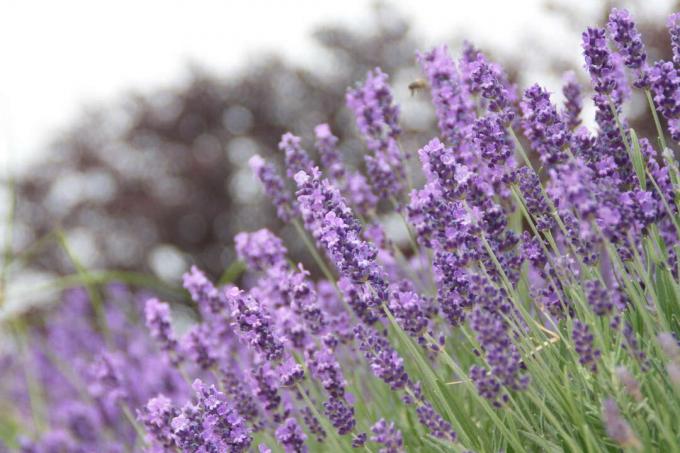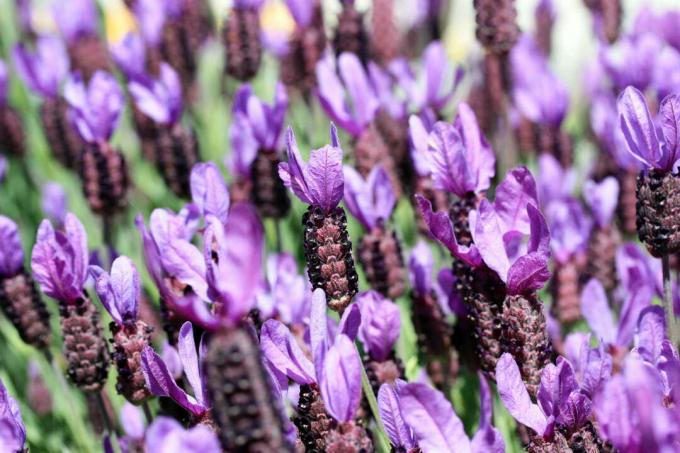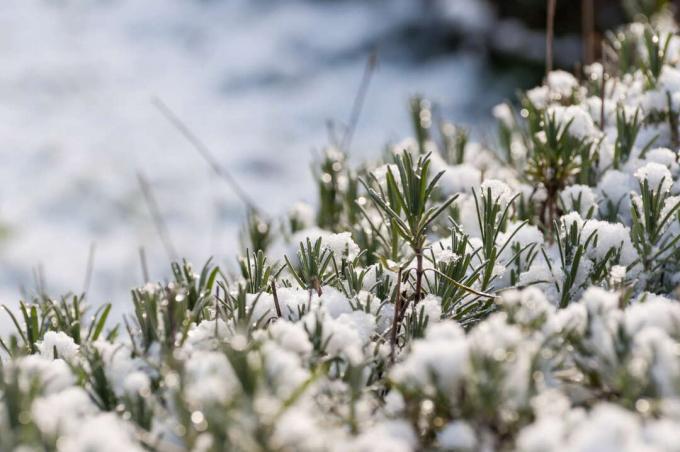The type of lavender is more diverse than you might think and includes many varieties. We will help you choose between Schopf, Speik and Genuine Lavender.

The genus lavender (Lavandula) belongs to the mint family (Lamiaceae). It includes around 30 different species, most of which grow as subshrubs or shrubs. In addition to the classic purple flowers, some of the species also offer a little more variety in color, such as the particularly pretty one White lavender (Lavandula angustifolia). Depending on the characteristics of the location, the different species can be more or less suitable for cultivation.
contents
- Lavender varieties: real lavender (Lavandula angustifolia)
- Lavender varieties: Coppy lavender (Lavandula stoechas)
- Lavender varieties: Speiklavender (Lavandula latifolia)
-
Hardy lavender species and varieties
- Hardy lavender varieties from real lavender
- Winter hardy Speiklavender
- Types of lavender: observe soil requirements
We compare the most important properties of the three major types of lavender for you. The right type of lavender is sure to find its way into your garden.
Lavender varieties: real lavender (Lavandula angustifolia)
The real lavender is probably the most popular type of lavender, which is also most commonly grown worldwide. In some areas it is also known as "Kleiner Speick" or "Stöchaskraut". It can be found at altitudes of up to 1600 meters. Since it is originally at home on warm, rocky slopes, the "Roman thyme", as it is also known, prefers calcareous, drier soils in the garden. It grows as a subshrub and is almost completely hardy. The leaf color varies from dark green to silver-white. The flowers again show different shades of blue and purple, but white and pink-flowering varieties are also present within the species. The aroma of real lavender is rather mild and subtle. It is therefore used both as a culinary herb and as a fragrance and as a medicinal plant.

We can recommend the following varieties:
- , Blue Cushion ‘: Compact variety with large, durable, light purple flowers; well suited for pot culture or the rock garden; Dwarf form
- , Hidcote Blue ‘: Proven English variety with dark blue-violet flowers; strongly fragrant; growing slowly and compactly; under ideal growth conditions, however, the plants can become relatively large
- , Hidcote Pink ‘: Vigorous growing variety with pale pink flowers; needs a regular cut
- , Dwarf Blue ‘: Medium-tall variety with gray-green foliage and purple flowers; is well suited as a border and scented hedge
- , Melissa ‘: The pale pink buds of this variety fade to a brilliant white after flowering
More beautiful Varieties of real lavender can also be found in our special article.
Lavender varieties: Cup of lavender (Lavandula stoechas)
Of the Coppy lavender stands out due to its large, ornamental bracts at the tip of the inflorescence, which look like a mop of hair - hence the name. In some places it is also referred to as "Welscher Lavender" or "Arabian Lavender". In its original homeland, unlike real lavender, it does not grow in mountain regions, but near the coast. The Schopflavender prefers lime-poor, sandy soils. In our regions it is usually not hardy and must therefore be overwintered frost-free. Schopflavender grows as a shrub and is somewhat more woody than Lavendula angustifolia. It is characterized above all by its long flowering period until August or even into September. The flower colors of this species range from pure white to strong pink and purple tones. The inflorescences and bracts can also be colored very differently. The topped lavender also produces essential oils with a strong aroma, which are, however, not used economically.

For example, some popular varieties include the following:
- , Marshwood ‘: Long flowering variety; lush flowers in shades of pink and purple
- , Kew Red ‘: New breed with red and white pinnate flower heads; compact growth; blooms from July to September
- , Anouk ‘: A variety with dark purple flowers; long flowering period from May to August; bushy growth; intense, pleasant fragrance
- , Otto Quast ‘: Fragrant lavender with pink-purple flowers; dense, broad growth; suitable for pot culture
- , Merle ‘: Compact shrub with red-purple flowers
Comprehensive information on Cultivation and care of poppy lavender You will find here.
Lavender varieties: Speiklavender (Lavandula latifolia)
The Speiklavender can be found in higher regions of the Mediterranean (up to 600 meters above sea level). Therefore it prefers calcareous and rather dry soils. The Speiklavender survives low temperatures down to -5 ° C unscathed in our latitudes. The shrub can reach a height of one meter under ideal growth conditions. However, it is characterized by a very strong aroma and can be used very well for scented potpourris, for example. In German-speaking countries, the Speiklavender is mainly known as "Großer Speik" or "Spanish Lavender". Because of its noticeably large leaves, it is sometimes referred to as "broad-leaved lavender". The color of the flowers and leaves does not vary as much as in the other species, as hardly any breeding work has been done.

Hardy lavender species and varieties
If you want to cultivate lavender outdoors all year round in our part of the world, it is best to use winter-hardy varieties when you buy them. In a sheltered location, they usually tolerate the sometimes very strong fluctuations in winter weather conditions very well. Depending on the region, additional protective measures may be necessary so that the Mediterranean herb survives the winter well. Below we introduce you to some of the hardy varieties of the two most famous types of lavender.
Hardy lavender varieties from real lavender
The real lavender can also be found in its original home at higher altitudes. Therefore, it can withstand temperatures down to -15 ° C for a short time. The robust type of lavender is one of the classics and should not be missing in any garden bed. The mentioned varieties Hidcote Blueˈ, Dwarf Blueˈ and Blue Cushionˈ are among the most robust varieties. They can usually be overwintered in the bed without any problems. We can also recommend the following varieties for outdoor cultivation:
- , Jamlitz ‘: Extremely robust, tough variety; also suitable for rough locations; blue-violet flowers from June to July; becomes relatively high
- , Blue Scent ‘: Robust variety; purple-blue flowers from the beginning of June; good growth; rather undemanding in the care
- , Ellagance Purple ‘: Resistant variety for bed cultivation; purple flowers from July to August; bushy growth

A comprehensive collection of hardy lavender varieties can also be found in our special article.
Winter hardy Speiklavender
The spotted lavender grows in its original home on dry, sunny slopes and is somewhat more sensitive to cold than the real lavender. Although it is partially frost hardy, it does not tolerate fluctuating weather at all. Above all, high temperature differences and rapidly changing conditions due to rain, snow, frost and thaw cause problems for the Mediterranean herb. To make overwintering easier, you can cultivate Speiklavender all year round in a tub or pot.
More information about the correct Wintering lavender in the bed and in the pot can be found here.
Types of lavender: observe soil requirements
For abundant flowering and healthy growth, the location requirements of the lavender species must be observed. If the potted lavender is to be planted without sandy soil, you can simply work sand into the bed on the spot. In order to create a calcareous milieu for the Speiklavender as well as the real lavender, one can help in an appropriate dosage with commercial lime fertilizer depending on the soil properties. The following applies to all species: water and fertilize little, because waterlogging is the enemy of these Mediterranean plants.
More about Care of lavender can be found here in our special article.



